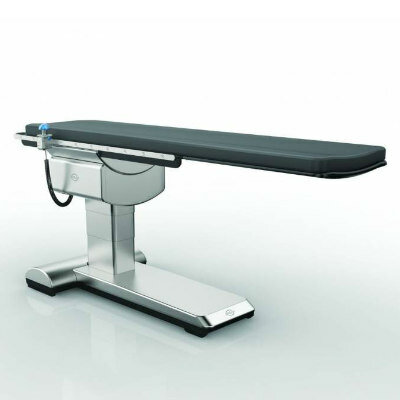MRI Fingerprint Technology Offers Early Detection of Disease
By MedImaging International staff writers
Posted on 25 Mar 2013
Magnetic resonance imaging (MRI) could routinely identify specific cancers, multiple sclerosis, heart disease, and other disorders early, when they are most treatable.Posted on 25 Mar 2013
Each body tissue and disease has a unique fingerprint that can be used to diagnose problems rapidly, scientists from Case Western Reserve University (Cleveland, OH, USA) and University Hospitals (UH) Case Medical Center suggest in their article published March 2013 in the journal Nature. By using new MRI technologies to scan for different physical properties at the same time, the researches distinguished white matter from gray matter from cerebrospinal fluid (CSF) in the brain in about 12 seconds, with the promise of doing this much faster in the near future.
The technology has the potential to make an MRI scan standard procedure in annual check-ups, the authors believe. A full-body scan lasting only minutes would provide a lot more data and require no radiologist to interpret the data, making diagnostics inexpensive, compared to current scans, they argued. “The overall goal is to specifically identify individual tissues and diseases, to hopefully see things and quantify things before they become a problem,” said Dr. Mark Griswold, a radiology professor at Case Western Reserve School of Medicine and UH Case Medical Center. “But to try to get there, we’ve had to give up everything we knew about the MRI and start over.”
Magnetic resonance fingerprinting (MRF) can gather much more data with each measurement than a conventional MRI can. Dr. Griswold compares the difference in technologies to a couple of choirs. “In the traditional MRI, everyone is singing the same song and you can tell who is singing louder, who is off-pitch, who is singing softer,” he said. “But that’s about it.”
The louder, softer, and off-pitch singing is represented by dark, light, or bright spots in the scan that a radiologist must decode. An MRI scan, for instance, would reveal swelling as a bright area in an image. But brightness does not inevitably compare with cause or severity of disease. “With an MRF, we hope that with one step we can tell the severity and exactly what’s happening in that area,” remarked Dr. Griswold.
The fingerprint of each tissue, each disease, and each substance inside the body is therefore a different song. In an MRF, each member of the choir sings a different song simultaneously, Dr. Griswold stated. “What it sounds like in total is a randomized mess.”
The researchers generate distinct songs by simultaneously varying different parts of the input electromagnetic fields that probe the tissues. These variations make the received signal sensitive to four physical properties that vary from tissue to tissue. These differences—the different notes and lyrics of their songs—become evident when applying pattern recognition programs using the same math in facial recognition software.
The patterns are then mapped. Instead of looking at relative measurements from an image, Griswold said quantitative estimates told one tissue from another. As the technology progresses, these findings should determine whether tissue is healthy or diseased, how seriously and by what process. The scientists believe that they will be able to interrogate a total of eight or nine physical properties that will allow them to produce the songs from a huge range of tissues, diseases, and materials.
For a patient, an MRF would seem similar to a fast MRI. When the scan is performed, all of the patient’s songs would be compared with the songbook, which will provide physicians with a range of diagnostic data. “If colon cancer is ‘Happy Birthday’ and we don’t hear ‘Happy Birthday,’ the patient doesn’t have colon cancer,” Dr. Griswold said.
Other researchers have tried to employ multiple parameters in MRI scans, but this group was able to scan fast and with higher sensitivity than in earlier efforts, he continued. “This research gives us hope. We can see that it’s possible the MRI can see all sorts of things.”
The group expects to reduce scanning time and continue to build the library of fingerprints over the next few years. Case Western Reserve and UH Case Medical Center have a 31-year history of developing MRI technology with Siemens Healthcare (Erlangen, Germany).
Related Links:
Case Western Reserve University














